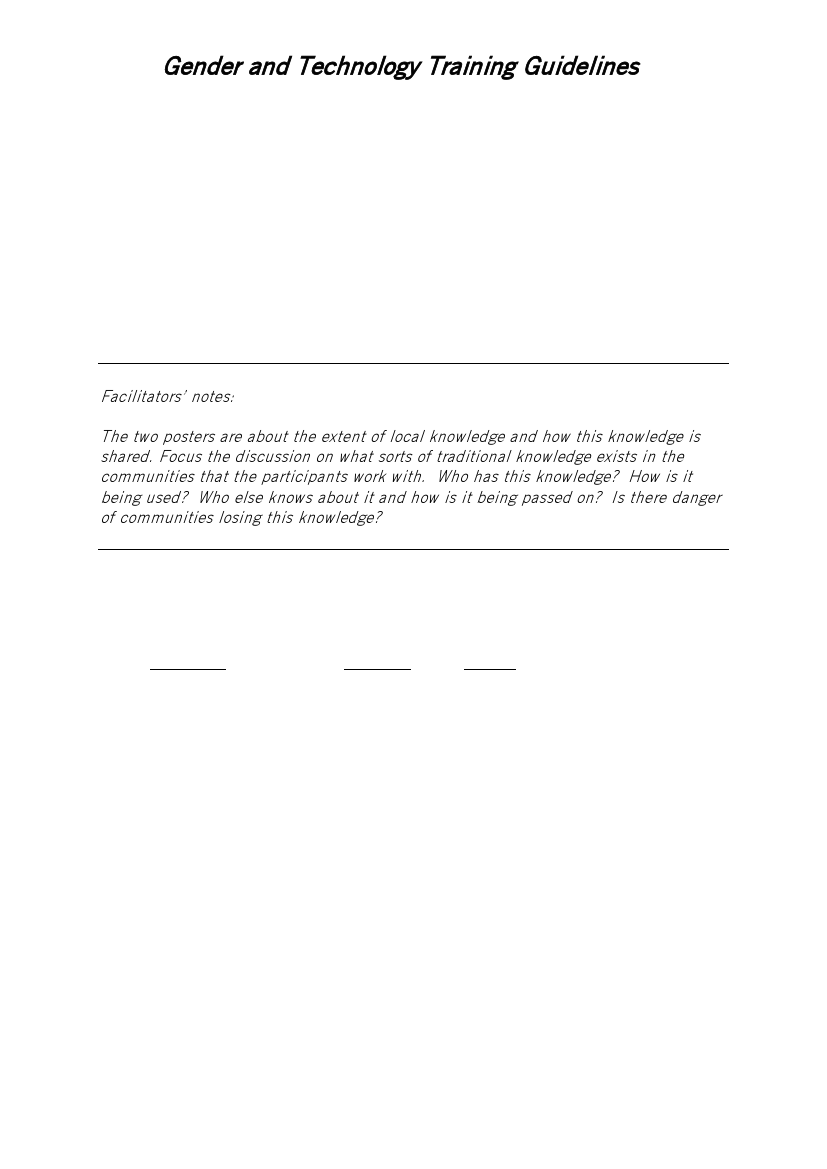
Gender and Technology Training Guidelines
PURPOSE To understand the importance of indigenous knowledge for women
TIME
1 hour
MATERIAL Two DIH Posters - Beginning Locally, Sharing Knowledge
ACTIVITY
Step 1
Put the posters up in front of the large group. What messages do these two
posters convey? Discuss.
Facilitators’ notes:
The two posters are about the extent of local knowledge and how this knowledge is
shared. Focus the discussion on what sorts of traditional knowledge exists in the
communities that the participants work with. Who has this knowledge? How is it
being used? Who else knows about it and how is it being passed on? Is there danger
of communities losing this knowledge?
Step 2
Divide the participants into three groups. Ask each group to focus on a body
of knowledge within the communities that they work with (this could be
knowledge of local plants, agricultural practices, food preservation techniques)
that maybe in danger of being lost. Ask the groups to develop a strategy for
collecting this knowledge, recording it and sharing it with other communities.
Tell each group that they will be asked to present this strategy to the wider
group and to justify the need for collecting, recording and sharing the
knowledge.
Step 3Each group makes a presentation to the larger group of their strategy.
Step 4
Discuss the presentations. From whom did the groups have to collect this
knowledge? How would these people feel about sharing this knowledge? Where
is the knowledge recorded? What would happen if this knowledge is not
collected or recorded? Who was the knowledge shared with? What is the
importance of sharing this knowledge?
SESSION 6
LOOKING AT WOMEN DIFFERENTLY
PURPOSE
.
To help participants to become more aware of the existence of stereotypical
attitudes towards different groups of people, including women, and how this
affects their work with communities in technology development
19